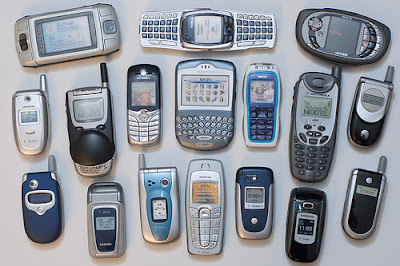
"Just throw it in the garbage" is an option many of us try to avoid when getting rid of things; we look for ways to get them reused, or ways to recycle.
But when it comes to electronics (cell phones, TVs, computers, etc.) it's more than just a matter of adding to landfills.
As GreenCitizen points out:
- Electronic equipment contains harmful toxins which, when released into the environment, can contaminate our water, land and air. Lead, mercury, cadmium and flame retardants are all persistent, bioaccumulative toxins (PBTs) that cause birth defects and damage to coronary, respiratory, nervous and skeletal systems.And as Earth 911 tells us (before going on to list the specific problems associated with televisions, cell phones and computers):
- A single computer or television monitor contains an average of 4 to 8 pounds of lead. Monitor glass contains about 20% lead by weight. When this glass is crushed in a landfill, the lead leaches into the soil.
Electronic waste accounts for 70 percent of the overall toxic waste that you currently find in landfills. In addition to valuable metals like aluminum, electronics often contain hazardous materials like lead and mercury.Want a good visual? National Geographic has a wonderful tour of the toxic components of a computer.
When placed in a landfill, these materials (even in small doses) can contaminate soil as well as drinking water.
Another visual? Californians Against Waste has a pie chart showing what's in your PC.
Greenpeace International also provides a run-down of just what's in our electronic devices. And their recent study Toxic Tech: Not in Our Backyard indicates that, in the U.S, "less than 20% of the e-waste categories televisions, PCs including peripherals and mobile phones were separated from other waste streams for further processing and recovery." In the combined 27 countries of the European Union, the figure is only slightly better, at 25%.
And in some places, it's illegal to put such items in the trash. I won't try to summarize the laws in other places, but in my state of California, it is now illegal to put televisions and computer monitors, computers, printers, VCRs, cell phones, telephones, radios, and microwave ovens in the trash.
So how should you dispose of electronics you no longer want? I'll cover that in the next series of posts.
[cell phone photo from djwudi / Michael Hanscom]

6 comments:
Can't resist a link to my post of last year called, "The Power of Visual Imagery":
http://thethoughtfulconsumer.blogspot.com/2007/10/power-of-visual-imagery.html
Contains a link to Seattle artist Chris Jordan's fabulous and shocking environmental awareness photography, including a photo of tossed away cell phones in his "Intolerable Beauty: Portraits of American Mass Consumption" series:
http://www.chrisjordan.com/
Makes you wonder what will become of all this e-waste . . . and us.
A friend of mine forwarded that Chris Jordan site a week or so back...pretty impressive.
I was actually just wondering about cell phone disposal...my old flip phone broke in half at the hinge, and tore the circuitry, so i had to replace it...but I don't know what to do with it...the phone, and the battery.
Cynthia, thanks for adding those links; I should have thought of it myself. Here, let's make them clickable: your post, and Chris Jordan's site.
Stephanie, cell phone disposal is the very next thing I'm planning to write about.
I'm so glad that you are posting on this too! I think it is so important to purge responsibly. I wish that I currently lived in a state that really cared about this sort of thing as much as CA!
I'm going to update the post on e-Waste on my blog to include the links to your part 1 and 2. :) It'll be a nice addition!
Carmen, I was glad to see your post on Clutter Control Freak for the same reason. I think most people want to do the right thing - if only they knew what that was, and it was reasonably easy.
I'll be giving a talk on Green Organizing later this month, and disposing of e-waste is definitely one of the things I'll be covering.
Post a Comment